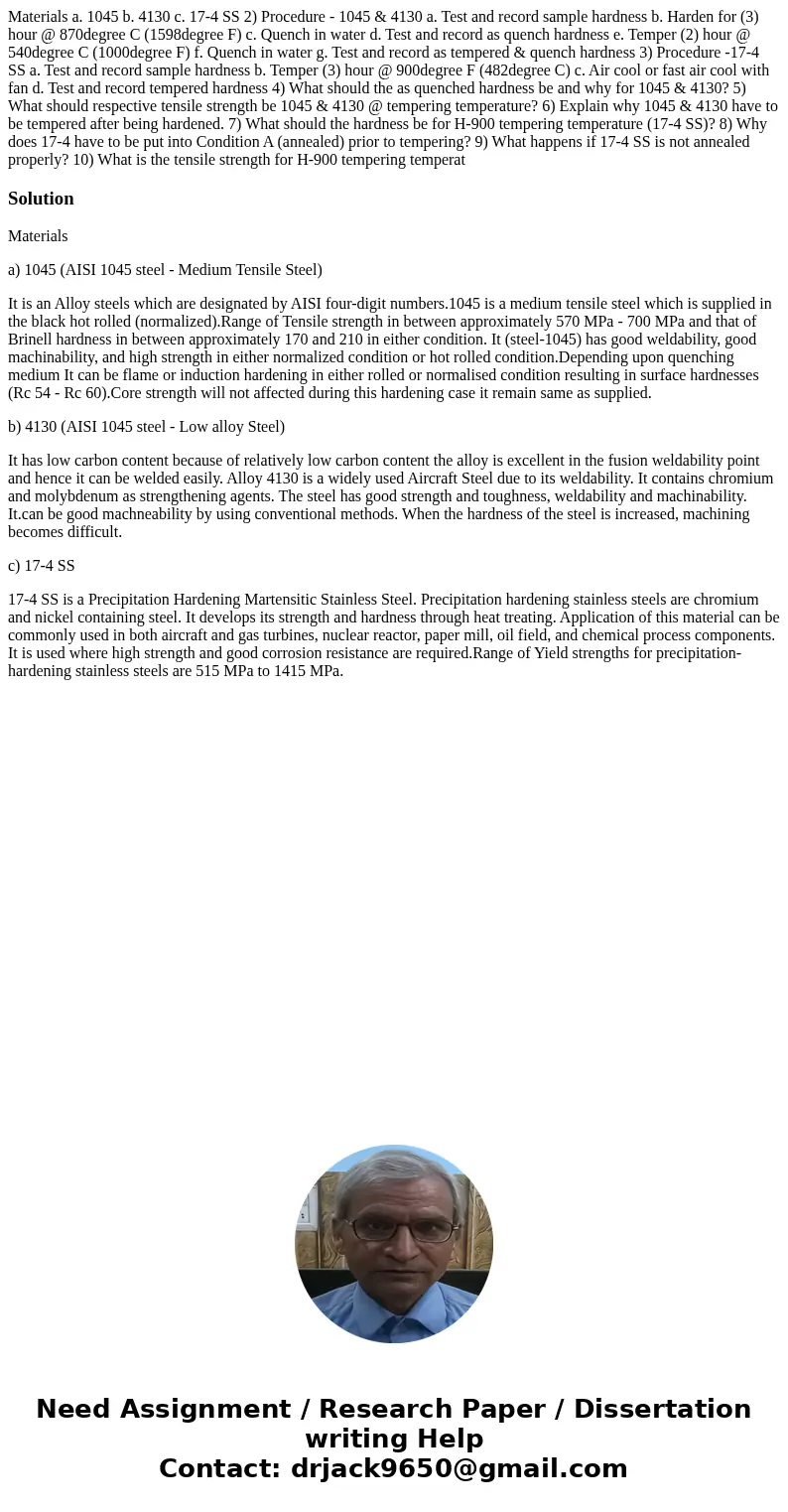Materials a 1045 b 4130 c 174 SS 2 Procedure 1045 4130 a T
Solution
Materials
a) 1045 (AISI 1045 steel - Medium Tensile Steel)
It is an Alloy steels which are designated by AISI four-digit numbers.1045 is a medium tensile steel which is supplied in the black hot rolled (normalized).Range of Tensile strength in between approximately 570 MPa - 700 MPa and that of Brinell hardness in between approximately 170 and 210 in either condition. It (steel-1045) has good weldability, good machinability, and high strength in either normalized condition or hot rolled condition.Depending upon quenching medium It can be flame or induction hardening in either rolled or normalised condition resulting in surface hardnesses (Rc 54 - Rc 60).Core strength will not affected during this hardening case it remain same as supplied.
b) 4130 (AISI 1045 steel - Low alloy Steel)
It has low carbon content because of relatively low carbon content the alloy is excellent in the fusion weldability point and hence it can be welded easily. Alloy 4130 is a widely used Aircraft Steel due to its weldability. It contains chromium and molybdenum as strengthening agents. The steel has good strength and toughness, weldability and machinability. It.can be good machneability by using conventional methods. When the hardness of the steel is increased, machining becomes difficult.
c) 17-4 SS
17-4 SS is a Precipitation Hardening Martensitic Stainless Steel. Precipitation hardening stainless steels are chromium and nickel containing steel. It develops its strength and hardness through heat treating. Application of this material can be commonly used in both aircraft and gas turbines, nuclear reactor, paper mill, oil field, and chemical process components. It is used where high strength and good corrosion resistance are required.Range of Yield strengths for precipitation-hardening stainless steels are 515 MPa to 1415 MPa.

 Homework Sourse
Homework Sourse